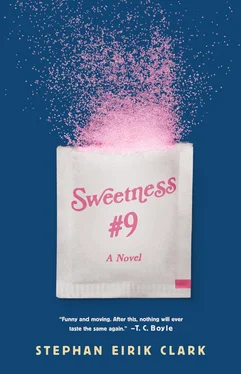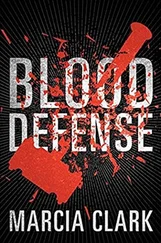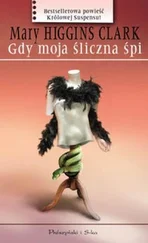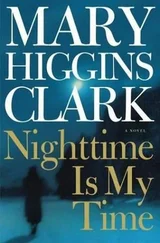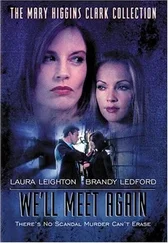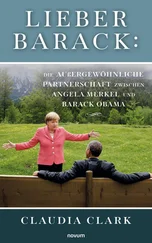We stopped next at the flavor application studio, which would have looked very much like a kitchen in a model home were it not for the scales and bags of white powder crowding its shelves and counter-tops. By the close of the following decade, after the Krafts, Nestlés, and Unilevers of this world had scaled back or eliminated their food product design teams in the name of an improved quarterly report, two more kitchens would be connected to this one, and our team of food scientists would triple in size. At present, only an Australian expat named Anthony spent his days here, making sure the flavorings created across the hall did not break down on their journey from the beaker to the oven, microwave, or Deep-freeze.
After circling away from here, Ernst pushed through the double doors at the end of the hall—“We call this the killing floor,” he said — and led me out into a vast open room where a dozen or more employees in gloves, goggles, and blue jumpsuits were performing a variety of tasks. One worker stood at an island counter-top, pouring an off-white powder through an aluminum cone into the mouth of a plastic five-gallon jug below. Two others stood on the far side of the room, tending to a fifty-five-gallon barrel beneath a large silver brewery vat.
Ernst removed a hair-net from a Kleenex-like dispenser on the wall and handed it to me. “To remind us that we are in the kitchen to the world,” he said. Once we were both suitably attired, he continued toward a series of metal shelving units where all the many chemical components used in the flavor development studio were stored in bulk.
“You’ll see we have everything you could ever need.”
There were dry mixes in large plastic jugs and jars (used to flavor soups and baked goods) and clear colorless liquids in glass containers (for ice creams and microwaveable dinners). Each was but a single letter in the flavor alphabet, a thing of infinite combinations, like the colors on a painter’s palette.
He grabbed a jar of a dry powder and studied its dot matrix label — calcium 5'-ribonucleotides, perhaps, or wild mushroom extract — then put it back after a moment’s contemplation, saying he’d be interested to see what I could do.
“Well, I can only hope to approach some of your achievements,” I said.
He smiled shyly and gently touched my back, guiding us toward the double doors. “I’m more an administrator these days than a flavorist,” he said.
“I doubt it, and even if that were so, you’d always be remembered for NoNilla®.”
We stopped as a beeping forklift passed before us, taking a crate of small blue barrels wrapped in cellophane to the back of a truck waiting at the open loading bay door.
“That was just something I dreamed up in response to the Global Vanilla Crisis of 1963,” Ernst said.
“You’re too modest.”
And he was. NoNilla®, the all-natural, non-characterizing flavor that “apes” the vanilla or vanillin into which it is added, made it possible for flavor perception to remain the same — and at a much better price point — even when a product contained only half its original amount of vanilla flavoring.
“There are only enough vanilla beans grown in this world to satisfy a country the size of Germany,” I said, “and here we are in the vanilla-dependent United States, where less than two percent of the world’s beans are grown but more than three out of every four are consumed, and still you say you did nothing?”
His smile gained a little confidence. “You’ve been doing your homework.”
“Because of you, we no longer have to fear a cyclone’s path across the vanilla fields of Madagascar or worry that drought or revolution will destroy the lesser crops in Mexico, Bali, or Java.”
He clapped me on the back and pushed through the double doors, saying now we only had to convince the world’s leading food manufacturers to get over their prejudices and reformulate their brands. This was no easy task then, when sales of NoNilla® were limited to companies that made generic cookies and off-brand ice cream, and it’s even more difficult now that we have entered into the post — New Coke world. Today, CEOs know to expect a customer uprising in response to every break from tradition, even if that break could only be detected by those in possession of the rarest mouth and nose.
“If NoNilla® doesn’t bring in the profits it should,” I said, “your peers know what you’ve done. You’re a flavorist’s flavorist, Ernst. A flavorist’s flavorist.”
JUST WEEKS AFTER I HAD BEEN fitted for my lab coat, I was feeling assertive enough to argue that FlavAmerica should redirect its limited research and development dollars toward our industry’s holy grail, the buttery artificial that is identical in taste to nature. One of my new colleagues, “Tennessee” Terrence Matthews, to this day the best sweet-brown man I’ve ever known, was not alone in dismissing me as “just another young flavor chemist tilting at cows.” But I’d learned my lesson; I’d no longer withhold my voice. So in one of the company-wide memos it was my job to compose as FlavAmerica’s lead cultural commentator and seer, I wrote:
Understand. Microwaves will be like public pay phones. In the near future, certainly no later than Orwell’s imagined 1984, you will be able to find one on every street corner alongside a vending machine that will offer you a dish you can pull from a box. People will deposit a few quarters and eat dinner while waiting for the train. Goulash, sweet and sour chicken, Dutch apple pie. Sometimes a snack will suffice and consumers will push a button to select their favorite brand of popcorn from a bag. It will take less than five minutes to cook, and corporate allegiances will be formed on the basis of the quality of the buttery taste.
There is a revolution coming to the dairy aisle. Let FlavAmerica be the first to rush the ramparts and raise its flag.
I proved myself no less valuable to the company in the eighties, as Reagan and Thatcher (with the occasional able-bodied assist from the pope) reshaped the world with a wave of merger madness. As Betty continued on at Rutgers for her MBA, I told Ernst Eberhardt that we could overcome the changes coming to our industry if we paid greater attention to those “mom-and-pop” shops that could no longer meet the minimum order standards of the consolidating multi-nationals. Here I am reminded of a Hasidic man from Williamsburg who appeared in my office one humid afternoon to send his thick, callused fingers worrying around the brim of his black hat. He had little more than a dream and an empty ten-ounce bottle in his battered black leather briefcase, but the words he spoke to me were still powerful enough to make my forehead perspire beneath the hum of the air conditioner.
“Flavored seltzer water,” he said.
It may sound simple now, but all revolutions are simple in the end. No more kings. Let’s divide the money evenly. Black cherry — flavored seltzer water.
No sooner had he left his card than I was pulling off the cover of my IBM Selectric and banging away at the keys.
Look into the future with me. People will tire of colas. Their color is dark, ominous. They bring to mind shadows and doubt, things untrustworthy, the hidden rivers of the mind.* In this more optimistic decade, under the leadership of The Great Communicator, Americans will demand a beverage that is clear, something that steers us away from the turbulent sixties and all the turbid years that followed.
Seltzer water. It is a beacon of purity. Observing its clear, colorless liquid and believing it will work on the soul, consumers will drink three, maybe four units a day. This is no false Cassandra’s cry. Raspberry. Root beer. Vanilla. Black Cherry. Shoppers will leave the supermarket with multiple six-packs and go home to tell their friends and families what they have found.
Читать дальше
